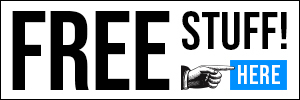Lloyd Dangle was still a boy when his father took him to the Detroit Institute of the Arts. There, in the courtyard of the gorgeous white marble Beaux-Arts building that dated to 1927, Dangle gazed up at the massive Diego Rivera mural illustrating how the automotive industry works. The mural begins with ore in the ground and goes all the way to giant machines requiring hundreds of workers to operate.
“When I looked at this as a kid, I was fascinated,” Dangle recalls. “Then I’d look at a Rembrandt, and think, ‘Where’s the rest of the picture?’ That mural really had an effect on my life. What I’m doing is what Rivera did in that mural. What I do is not as pretty, but it works.”
Dangle is a unique, even unlikely, corporate consultant. For more than two decades, he skewered Republicans and corporate executives on a weekly basis as one of the most popular syndicated cartoonists for alternative newsweeklies, with a comic strip called “Troubletown.” But a dozen years ago, Dangle left that job and joined the corporate world he once lampooned. Today, he uses cartooning skills not to satirize corporate executives, but to help them strategize their futures.
“He’s a bit of a secret weapon to get people unstuck,” says James Young, principal with Tangible, a San Francisco-based product design agency. “He’s great at listening and getting people on track. He brings out the best in people.”
It’s a stunning turnaround that Dangle explains pretty simply.
“I was motivated because I had a kid and he was going to college, but I forgot to make money in my life,” he says.
An Oakland resident since 1992, Dangle and his partner recently traded their place in affluent, family-friendly Piedmont for a spot in the bit hipper but still walkable Adams Point. Though the move was only a few minutes away, it wasn’t easy. “We downsized quite a bit,” he says. “Lots of books, lots of art, furniture. We got rid of thousands of books. Our whole approach is to lighten up at this point in our lives.”
The move made sense, given Dangle’s son is now grown, and living in Berkeley. Like his parents, he’s an artist, though with his own style. “He came up with his own approach to the world,” Dangle says. “I was always drawing around him since he was a baby. So was his mom.”
It’s difficult to understand now, with the instantaneous information overload of the internet and social media, that in those days, Dangle could make a living drawing one cartoon a week. But that’s what he did, as a syndicated cartoonist, from 1988 to 2011. It wasn’t an extravagant living by any stretch, but it was OK.
His comics were usually nine panels (sometimes more) squeezed into a one-sixth-page box that could fit easily on an alt-weekly page. They were black and white, with lots of people with disconcertingly skinny noses who looked crudely drawn unless one stared at them awhile and saw all the emotional quirks and nuances Dangle somehow squeezed in.
Dangle had total freedom to draw what he wanted, so “Troubletown” skewered Republicans most of all—President George W. Bush was a favorite target—but he also went after moderate Democrats, corporate executives and even just irresponsible people in general. It was extremely left-wing, but also genuinely funny and all too often absolutely true.
He would draw a comic on Monday, which would then come out on Wednesday or Thursday. That was exciting, especially if it spurred letters to the editor. But by then, Dangle was already working on the following week’s comic.
As the internet really started taking off, he could draw a web-only version with color. Now, his weekly schedule was a 24-hour one. But then people began making their own memes and sharing them on social media. By 2011, Dangle looked around, decided he didn’t want to be the last person on the sinking ship, and ended “Troubletown.”
For the next few years, work was inconsistent. One of his biggest projects was drawing the packing for Airborne Health Formula, a line of vitamin supplements. His original designs were almost pure “Troubletown,” with funny-looking germ monsters and people with skinny noses. But after the company bought him out, they made the packaging “more generic,” Dangle notes.
Then in 2014, an executive with Hewlett Packard asked Dangle to join their team. The job was simple: Dangle would attend high-level corporate meetings—at company expense—and keep a graphic record of what was discussed. Dangle, who was already making moves into corporate consulting, agreed. “The money is more than I ever made,” he says. “And the team was very nice. All the years I did comics, I was treated badly.”
Soon, Dangle found himself in “weird, tense situations,” which he says were addicting. These were meetings with senior leaders trying to reset their corporate relationships with customers, or each other. Hundreds of millions of dollars were often at stake. “There could be some intense anger, emotion, in these meetings,” Dangle says. “Those are my favorites because you see incredible change come over people.”
For the first year, Dangle says he spent a lot of time just trying to figure out what the executives were talking about. “You’d be amazed at how bad corporate meetings are,” he says. “They show PowerPoint presentations, and then everyone falls asleep. But I was always willing to ask a dumb question. And when I asked it, I found half the room didn’t know either.”
But Dangle wanted more. He didn’t just want to draw records of meetings; he wanted to use his consultation and facilitation skills to make corporate America better. He also knew that he could draw very fast, and he wanted to use that skill.
Dangle also now understood how corporate executives tried to communicate, what they were after and why they were running into trouble. He wanted to help, so he started his own firm, Draw the Future. Unlike mere graphical recording, Dangle wanted to use his cartooning skills to help corporate executives strategize their company’s future.
“I call it ‘do-it-yourself futurism,’” says Dangle. “I try to help people who are ready for change. It requires a willingness to be vulnerable. I don’t tell people what the future is. But if they’re curious about what the future will be, I will work with them.”
Dangle says part of the reason his methods work is because of a mental process called “cognitive offloading.” The human brain often forgets ideas that are verbalized. When the same idea is captured in something tangible, like a drawing or a cartoon, people will remember not only the idea, but even things like where they were standing or sitting when they were first exposed to the idea.
Exactly which companies Dangle works for today is a closely guarded secret. He would not disclose his clients, past or present, saying all his consulting work is protected by non-disclosure agreements. In fact, when he asked an executive at one major company he’s worked with—definitely a name one has heard of—if someone would talk to me about his consultations, the mere request “caused consternation,” according to Dangle.
“A lot of his work is sensitive,” says James Young, the executive who did muster the courage to speak with me about what it was like to work with Dangle, though he would only speak generally. Young says his company, Tangible, was going through “big changes” and needed help focusing its corporate goals. “These were pretty high-stakes meetings,” notes Young. “He knows how to bring people along to consensus.”
Young says Dangle’s use of cartoons to show executives what they’re trying to achieve is remarkably different from typical corporate meetings. “Usually people are having circular conversations in boring conference rooms while watching bullet-point slides,” says Young. “That’s how business works.”
Dangle’s work is also, to be clear, different from art itself. Where Dangle once spent his days drawing cartoons which were then published in alt-weekly papers and posted online, available for free to whomever wanted to see them, these days the work he produces is secret and proprietary. And when the need for the drawings ends, they’re placed in special bags and shredded, like so many confidential documents. Sure, they may be photographed for internal company reports, but the originals are always destroyed.
“It’s not about artwork,” Dangle says, a little too simply. “They’re property of the company.”
So does Dangle, who seems happy with his life as a corporate consultant—even if he does admit that corporate meetings are too often horrible—regret his old “Troubletown” days?
“Sort of,” Dangle admits. “I was the person who ran into a bar and started a fight, then ran out. But I was in the studio doing the next week’s comic when the bomb went off. I contributed to outrage culture. In that way, I was ahead of my time. I do miss it, but not that much.”











